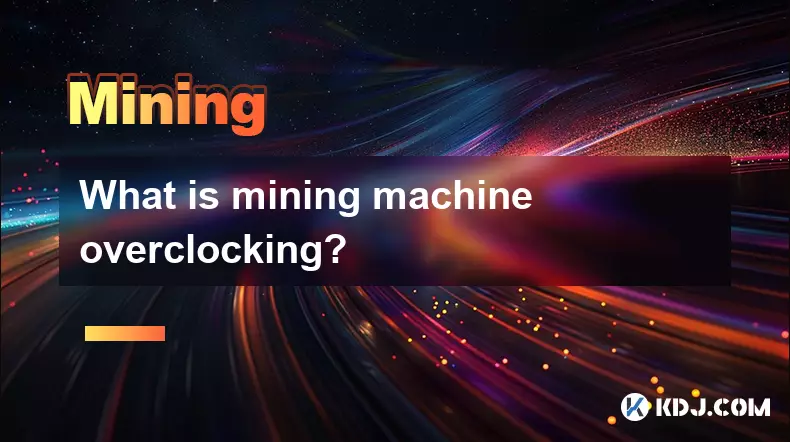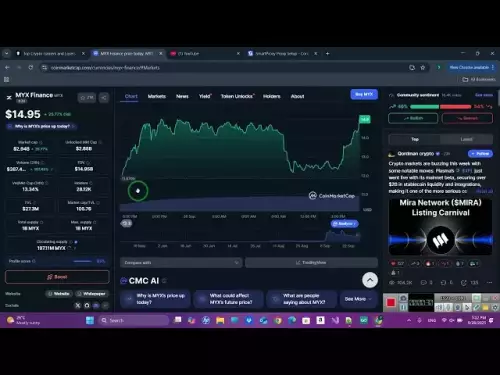-
 bitcoin
bitcoin $109547.008142 USD
0.04% -
 ethereum
ethereum $4011.838726 USD
-0.05% -
 tether
tether $1.000402 USD
-0.01% -
 xrp
xrp $2.798606 USD
0.88% -
 bnb
bnb $970.877944 USD
1.39% -
 solana
solana $202.237275 USD
-0.95% -
 usd-coin
usd-coin $0.999673 USD
0.00% -
 dogecoin
dogecoin $0.229294 USD
-1.15% -
 tron
tron $0.336370 USD
-0.45% -
 cardano
cardano $0.777260 USD
-1.66% -
 hyperliquid
hyperliquid $45.503019 USD
1.73% -
 ethena-usde
ethena-usde $1.000362 USD
0.01% -
 chainlink
chainlink $20.785303 USD
-1.10% -
 avalanche
avalanche $28.755822 USD
-0.11% -
 stellar
stellar $0.358303 USD
-0.48%
How does the Bitcoin halving affect mining?
The Bitcoin halving cuts miner rewards in half every four years, reducing new supply and increasing scarcity, with long-term sustainability relying on rising prices and transaction fees.
Sep 21, 2025 at 03:00 pm

Understanding the Bitcoin Halving Mechanism
1. The Bitcoin halving is a pre-programmed event that occurs approximately every four years, or after every 210,000 blocks are mined on the Bitcoin blockchain. This mechanism was designed by Satoshi Nakamoto to control the supply of new bitcoins entering circulation, ensuring scarcity and mimicking the extraction of finite resources like gold.
2. During each halving, the block reward given to miners for validating transactions and securing the network is reduced by 50%. Initially set at 50 BTC per block in 2009, the reward has since been halved multiple times—first to 25 BTC, then 12.5 BTC, followed by 6.25 BTC, and most recently to 3.125 BTC after the April 2024 halving.
3. This reduction directly impacts the primary source of income for miners, as they rely heavily on block rewards rather than transaction fees. With fewer bitcoins awarded per block, mining profitability becomes more sensitive to external factors such as electricity costs, hardware efficiency, and the market price of Bitcoin.
Immediate Impact on Mining Profitability
1. Immediately following a halving, the revenue stream for miners is cut in half if all other conditions remain constant. For example, a miner earning $20,000 per day from block rewards before the halving would see that drop to $10,000 post-halving unless the Bitcoin price increases proportionally.
2. Miners operating with outdated or inefficient equipment often face negative margins after the halving, especially in regions with high electricity costs. These operators may be forced to shut down their rigs or sell off hardware, leading to a temporary decline in the network’s total hash rate.
3. The competitive nature of mining intensifies as only those with access to low-cost energy and state-of-the-art ASICs can maintain profitability. This consolidation tends to push out smaller players, increasing centralization risks within the mining ecosystem.
4. Transaction fees become a more significant component of miner revenue over time. However, since average fees do not immediately compensate for the lost block reward, there is a transitional period where many mining operations must adapt or exit the market.
Network Hash Rate Adjustments Post-Halving
1. The Bitcoin network automatically adjusts its mining difficulty every 2,016 blocks (roughly every two weeks) to maintain an average block time of 10 minutes. After a halving, if a large number of miners go offline due to reduced profitability, the hash rate drops temporarily.
2. A lower hash rate triggers a downward difficulty adjustment, making it easier for remaining miners to find blocks. This self-correcting mechanism helps stabilize block production and ensures continuity in transaction processing despite shifts in miner participation.
3. Historical data shows that after each previous halving, the hash rate eventually rebounded and surpassed pre-halving levels. This recovery is driven by renewed investor interest, rising Bitcoin prices, and reinvestment in more efficient mining infrastructure.
4. The geographic distribution of mining also shifts in response to economic pressures. Operations increasingly migrate to countries offering cheap renewable energy, favorable regulations, or cooler climates that reduce cooling costs for mining farms.
Long-Term Structural Changes in Mining Economics
1. As block rewards continue to diminish with each halving cycle, the sustainability of mining hinges increasingly on Bitcoin’s market valuation. If the price appreciates sufficiently, it can offset reduced subsidies and maintain incentive alignment across the network.
2. Mining pools play a growing role in aggregating computational power and distributing rewards among participants. Their dominance raises concerns about centralization, particularly when a single pool controls more than 30% of the network’s hash rate.
3. Institutional involvement in mining has surged, with publicly traded mining companies raising capital to deploy large-scale operations. These entities benefit from economies of scale, hedging strategies, and long-term planning capabilities unavailable to individual miners.
4. Technological innovation continues to shape the industry, with advancements in chip design, immersion cooling, and renewable energy integration reducing operational overheads and extending the lifespan of mining hardware.
Frequently Asked Questions
What happens to Bitcoin miners after the final halving?Miners will eventually stop receiving block rewards altogether, which is projected to occur around the year 2140. At that point, their income will come exclusively from transaction fees. The viability of mining will depend on how much users are willing to pay for transaction inclusion and the overall throughput demands on the network.
Can a halving cause Bitcoin to crash?While past halvings have been followed by significant price rallies, there is no guarantee of upward movement. Market sentiment, macroeconomic conditions, regulatory developments, and adoption trends all influence price behavior. Short-term volatility is common, but crashes are not an inherent outcome of the halving itself.
Do all cryptocurrencies have halvings?No, the halving mechanism is specific to certain proof-of-work blockchains like Bitcoin and Litecoin. Many other cryptocurrencies use different emission models, including fixed supplies, inflationary schedules, or deflationary mechanisms based on token burning.
How do mining pools respond to halvings?Mining pools typically experience fluctuating membership as less efficient miners leave the network. Pools may adjust fee structures, improve transparency, or offer staking-like services to retain contributors. Some pools also invest in their own mining operations to remain competitive.
Disclaimer:info@kdj.com
The information provided is not trading advice. kdj.com does not assume any responsibility for any investments made based on the information provided in this article. Cryptocurrencies are highly volatile and it is highly recommended that you invest with caution after thorough research!
If you believe that the content used on this website infringes your copyright, please contact us immediately (info@kdj.com) and we will delete it promptly.
- BlockchainFX, Binance Coin, Cardano: Decoding the Crypto Landscape in 2025
- 2025-09-29 04:45:12
- Cathie Wood, Bitcoin, and the Future of Monetary Standards: A New York Perspective
- 2025-09-29 04:25:17
- Crypto Presales Under the Microscope: BlockDAG, HYPER, and the Hunt for the Next Big Thing
- 2025-09-29 04:25:17
- Ethereum Bulls Eye $4,000: Is the Rally Sustainable?
- 2025-09-29 05:05:14
- Aster Price Surge: Bullish Breakout or Falling Wedge Fiasco?
- 2025-09-29 04:45:12
- Aptos Price Prediction: Will the Velociraptor Upgrade Trigger a Rally?
- 2025-09-29 04:50:01
Related knowledge

The difference between staking and mining
Sep 24,2025 at 05:18am
Understanding Staking in the Cryptocurrency Ecosystem1. Staking involves holding funds in a cryptocurrency wallet to support the operations of a block...

How to participate in testnet mining?
Sep 22,2025 at 09:18am
Understanding Testnet Mining in the Crypto Ecosystem1. Testnet mining is a method used by blockchain developers to simulate real-world conditions on a...

How to dispose of abandoned mining machines?
Sep 19,2025 at 08:19pm
Assessing the Condition of Abandoned Mining Rigs1. Begin by inspecting each mining machine for visible damage, corrosion, or missing components. Machi...

How to identify high-quality mining pools?
Sep 21,2025 at 03:19pm
Reputation and Track Record1. A mining pool’s reputation is built over time through consistent performance and transparency. Pools that have operated ...

Advantages of decentralized mining pools
Sep 20,2025 at 04:36pm
Enhanced Security and Resistance to Censorship1. Decentralized mining pools operate on blockchain-based smart contracts, eliminating the need for a ce...

What is mining machine overclocking?
Sep 21,2025 at 07:19pm
Understanding Mining Machine Overclocking1. Mining machine overclocking refers to the process of increasing the operating frequency of a cryptocurrenc...

The difference between staking and mining
Sep 24,2025 at 05:18am
Understanding Staking in the Cryptocurrency Ecosystem1. Staking involves holding funds in a cryptocurrency wallet to support the operations of a block...

How to participate in testnet mining?
Sep 22,2025 at 09:18am
Understanding Testnet Mining in the Crypto Ecosystem1. Testnet mining is a method used by blockchain developers to simulate real-world conditions on a...

How to dispose of abandoned mining machines?
Sep 19,2025 at 08:19pm
Assessing the Condition of Abandoned Mining Rigs1. Begin by inspecting each mining machine for visible damage, corrosion, or missing components. Machi...

How to identify high-quality mining pools?
Sep 21,2025 at 03:19pm
Reputation and Track Record1. A mining pool’s reputation is built over time through consistent performance and transparency. Pools that have operated ...

Advantages of decentralized mining pools
Sep 20,2025 at 04:36pm
Enhanced Security and Resistance to Censorship1. Decentralized mining pools operate on blockchain-based smart contracts, eliminating the need for a ce...

What is mining machine overclocking?
Sep 21,2025 at 07:19pm
Understanding Mining Machine Overclocking1. Mining machine overclocking refers to the process of increasing the operating frequency of a cryptocurrenc...
See all articles









































































